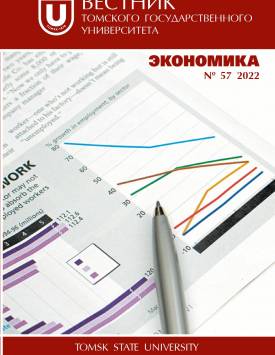Institute of cooperation: Evolution and modem perspectives
The article examines the history of the development of cooperative forms of management from the standpoint of an evolutionary approach, taking into account the economic, social and legal features of their functioning on the basis of domestic and foreign experience. The historical development of cooperation was explored using archival data, which made it possible to identify the stages of development of cooperation, the institutional environment. The authors consider the institution of cooperation from the perspective of the concept of polarized development, suggesting that clusters in the modern economy repeat the functions of cooperatives. As part of the study, the authors carried out a historical analysis of foreign and domestic experience in the development of the institution of cooperation: the historical stages of development in Russia from 1831 to the present are highlighted: the first stage, 1831-1917; the second stage, 1917-1990; the third stage, 1991 to the present. On the basis of the analysis and systematization of archival data, the authors compared the development of the cooperative movement and the scale of returns from their activities, including on the basis of a study of statistical indicators that were demonstrated by commercial and industrial cooperation. The types and functions of cooperatives in world practice are considered, their role is determined in accordance with the mission of the International Cooperative Alliance. The authors investigated the legislation of the Union of Soviet Socialist Republics and the Russian Federation in terms of defining the essence and regulation of the activities of cooperatives, which made it possible to identify the difference between the modern form of cooperatives and the historically established one. The authors conclude that entrepreneurs use the modern form of cooperatives in Russia as a tool to reduce the tax burden, and not as a tool for organizing activities, which has confirmed its effectiveness in domestic and world practice. On the basis of archival data, a sample of the subjects of the RSFSR, leading in the number of cooperatives and in the volume of products sold by cooperatives, was made, which formed the basis for mapping. In the article, based on the mapping method, a graphical representation of cooperatives and clusters is made as a modern heir to the cooperative movement (based on archival statistical data: by their number and main indicators of activity by economic regions, territories and regions), which made it possible to identify concentration points in the economic space on the modern map of Russia (Republic of Tatarstan, Chelyabinsk Oblast, Altai Krai, Moscow). Contribution of the authors: The authors contributed equally to this article. The authors declare no conflicts of interests. Contribution of the authors: the authors contributed equally to this article. The authors declare no conflicts of interests.
Keywords
growth points, concept of polarized development, regional development, clusters, cooperatives, cooperative principles, mappingAuthors
| Name | Organization | |
| Razvadovskaya Yulia V. | Southern Federal University | yuliyaraz@yandex.ru |
| Kaplyuk Ekaterina V. | Southern Federal University | ekapluk@gmail.com |
| Rudneva Kristina S. | Southern Federal University | |
| Chernyak Mikhail E. | Tomsk State University | legostaevakristina@rambler.ru |
References

Institute of cooperation: Evolution and modem perspectives | Vestnik Tomskogo gosudarstvennogo universiteta. Ekonomika – Tomsk State University Journal of Economics. 2022. № 57. DOI: 10.17223/19988648/57/1
